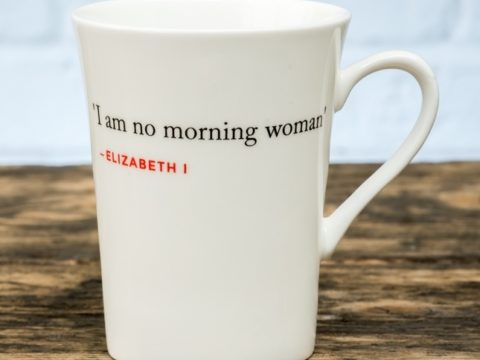Anne of Denmark: Life Story
Chapter 6 : Trouble & Factions
For the first few years of their marriage, Anne and James spent much of their time together – often at Dunfermline, or in the houses of the various nobles – a proceeding which made some of them nervous, as, under Scottish law, when the King attained the age of twenty-five, he could rescind grants made during his minority. During the long course of the various regencies, the Crown had lost considerable amounts of land and revenue. As Anne travelled to new places, she often had an official ‘entry’ marked with parades. On example was her entry to St Johnston on 29th June 1591.
There was another rumour of pregnancy in the summer of 1591, when Elizabeth indicated that she would send both presents and an envoy for the anticipated christening, but, again, Anne was either not pregnant, or lost the baby. It was beginning to be feared that she would have no children, which was of great concern – a disputed succession between the various branches of the Stewart family might well have led to a renewal of faction fighting. There were also rumours that Anne was being influenced in her religion by the Countess of Huntly, who was a Catholic.
The early 1590s were a time of some turbulence – Huntly, Bothwell, Maitland and others were constantly in and out of favour as plots were discovered, feuds maintained and murders committed. One of the most serious plots was Bothwell’s attempt to abduct, or possibly assassinate, James and Anne, and another was the murder of the Earl of Moray by Huntly’s men. At different times James punished or forgave malefactors, and Anne took different parts – particularly in the matter of the murder of Moray. Despite Lady Huntly being her friend, Anne condemned Huntly roundly, whereas most observers thought that James intended to forgive him – which is what eventually transpired.
The frequency with which Anne is recorded as being ‘hard’ against one individual or ‘entertaining a conceit’ against them, suggest that she had a tendency to bear grudges, and to have been easily offended, seeing slights where they were not necessarily intended.
In particular, her anger towards Chancellor Maitland, possibly because she discovered that he advised James against marrying her, or perhaps over a land dispute, or because Anne thought that Lady Maitland had insulted her, was so deep seated that eventually she was told that it was damaging the King, and putting Maitland’s life in jeopardy. She agreed to an arbitration of their differences presided over by the Earl Marishal, with whom she was on excellent terms, but this had little lasting effect and she continued to be seen as the Chancellor’s opponent.
Anne frequently practised one of the key roles of queens – interceding with her husband for forgiveness for those in disgrace. This was a well-understood ritual – the King could be seen to be a stern dispenser of justice, moved by the Queen’s pleas to mercy. On one occasion, however, when Anne pleaded for the Earl of Bothwell, who had deeply offended James, he was so upset and angry with those who had persuaded her to act, that she withdrew her request. She was more successful in pleas for Lord Scott of Buccleuch. Many historians accuse Anne of ‘meddling’ but it is certainly possible to interpret her pleas for punishment or mercy as pre-concerted with James to achieve the outcomes he wanted.
These internal wrangles amongst the nobility and the constant fear of plots began to depress Anne, and in July 1592 it was reported to Burghley that she was often tearful, wishing she could go home to her mother – we should remember that she was still only seventeen years old.
Anne had been permitted to keep a number of her own countrymen and women in her household – something queens were not always permitted to do. This suggests a kindness on James’ part towards his young wife, and a desire to keep her happy, but it was also necessary for Anne to accept Scots into her personal retinue. There are indications that Anne had refused to be served by Scottish ladies and gentlewomen. James and Chancellor Maitland both tried to persuade her, the latter with the words that Queen Sophie had given him special responsibility to advise her daughter in all matters that were for her ‘honour and benefit’.
Unfortunately, this loyalty to her own servants created discord. Anne and James quarrelled when a man by the name of Logie, who had been involved in Bothwell’s attempts to kidnap the royal couple, escaped by means of Anne’s maid-of-honour, Margaret Vinstarr, who helped him climb out of a window in a room next to that in which James and Anne were sleeping.
James was so angry with Anne, blaming her for Vinstarr’s conduct, that both were reduced to tears. He followed up by ordering his Council to tell her to dismiss the girl, but Anne refused to answer them, saying she would only speak to him directly about it. She then dug her heels in, and said she would not send Vinstarr or her other maids back to Denmark – she would rather go back there herself. Perhaps as a way to save face without actually backing down, Anne then sent letters to Queen Elizabeth, asking her to recommend some gentlewomen to attend her.
Anne of Denmark
Family Tree




